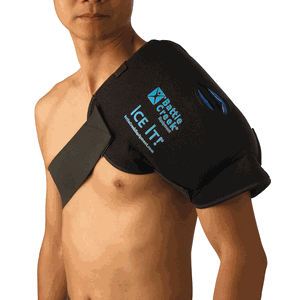 Bursitis (bur-SY-tis) is a painful condition that affects fluid sacs that cushion the bones, tendons and muscles near joints. It occurs when these sacs become inflamed.
Bursitis (bur-SY-tis) is a painful condition that affects fluid sacs that cushion the bones, tendons and muscles near joints. It occurs when these sacs become inflamed.
The most common locations for bursitis are shoulders, elbows and hips. However, it can also develop in knees, heels and at the bases of big toes. Bursitis often occurs near joints that perform frequent repetitive motions, such as the hitting/serving shoulder in racquet sports players.
Treatment typically involves resting the affected joint, icing it and protecting it from further trauma. In most cases, bursitis pain goes away within a few weeks with proper treatment, but recurrent flare-ups of bursitis are common.
For racquets sports players, especially tennis, squash, pickleball and badminton players who play frequently, bursitis is a common injury. If left untreated, it can also become a debilitating injury that keeps players off of the court for weeks at a time.
As a coach and player who is frequently on court for twenty or more hours per week, I can speak from personal experience regarding the consequences of leaving bursitis untreated. In my younger years while teaching and playing racquet sports, I estimate that I missed several hundred matches and lessons.
Since then, however, I have developed a very effective strategy for preventing the development of bursitis and for healing it quickly once it occurs. In fact, I now rarely miss matches or lessons due to bursitis.
My strategy is very simple. I keep a freezer full of ice packs and I use them every time I get home from playing or teaching. Specifically, I keep three shoulder packs and three general purpose rectangular ice packs in the freezer. I use the shoulder packs after every match regardless of whether I am feeling pain or not. The shoulder packs help me cool the shoulder joint down quickly and prevent inflammation from developing in the fluid sacs.
The other, rectangular ice packs I use only when I am feeling pain in a particular non-shoulder joint, such as my knee or the base of my foot. At the first sign of pain in these areas, I ice, ice, ice until the pain goes away — because this is the best way I have found to prevent inflammation from settling in and becoming a longterm problem.
Top 3 Tips for Dealing with Bursitis
Here are my Top Three Tips for players who want to treat or prevent bursitis:
1. Keep at least three ice packs in the freezer. The trick is to rotate each one 20 minutes on and 20 minutes off. A single ice pack is not enough because it takes six hours to freeze again after you use it. Having three allows you to ice for about 60 minutes after every match.
2. Large ice packs are better than small ice packs. I look for ice packs that are long, wide and thick — about twice as big as I think I need. The small ones melt too quickly and don’t provide penetrating cooling. This is especially important in the shoulder where the fluid sacks are deep in the joint below several layers of muscle. Small ice packs will cool the surface, but the cooling will not reach the joint.
3. Shoulder systems are extremely convenient because shoulders are difficult joints to ice. Using a harness system like the one in the image above allows me to ice my shoulder while moving around. In fact, I am wearing one now while I am typing this piece. If I wasn’t wearing it, this would be difficult to do.
Preventing Bursitis
Preventing bursitis is infinitely preferable to treating it. An hour of ice after every match is simple and effective but allowing it to develop and settle into your shoulder may result in weeks of ice, drugs and physiotherapy. My best advice is to avoid getting it in the first place.
